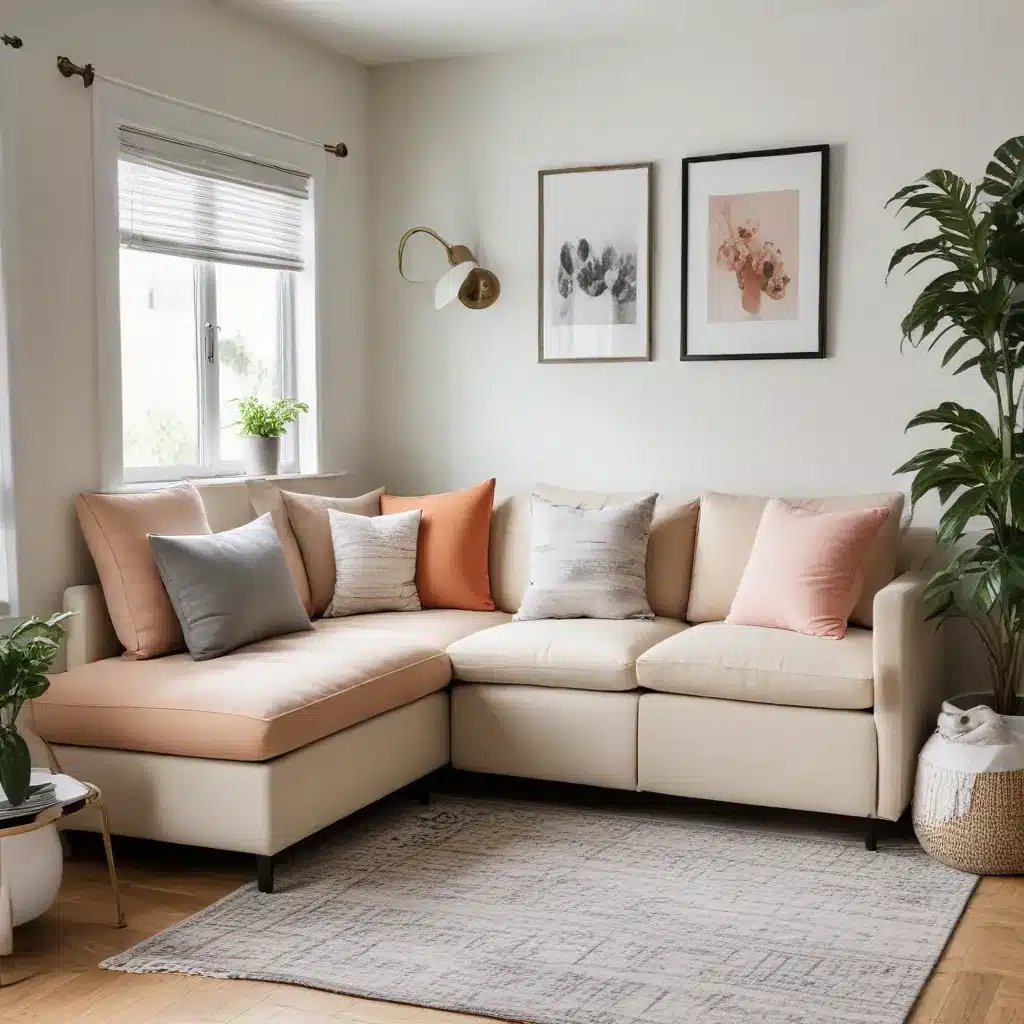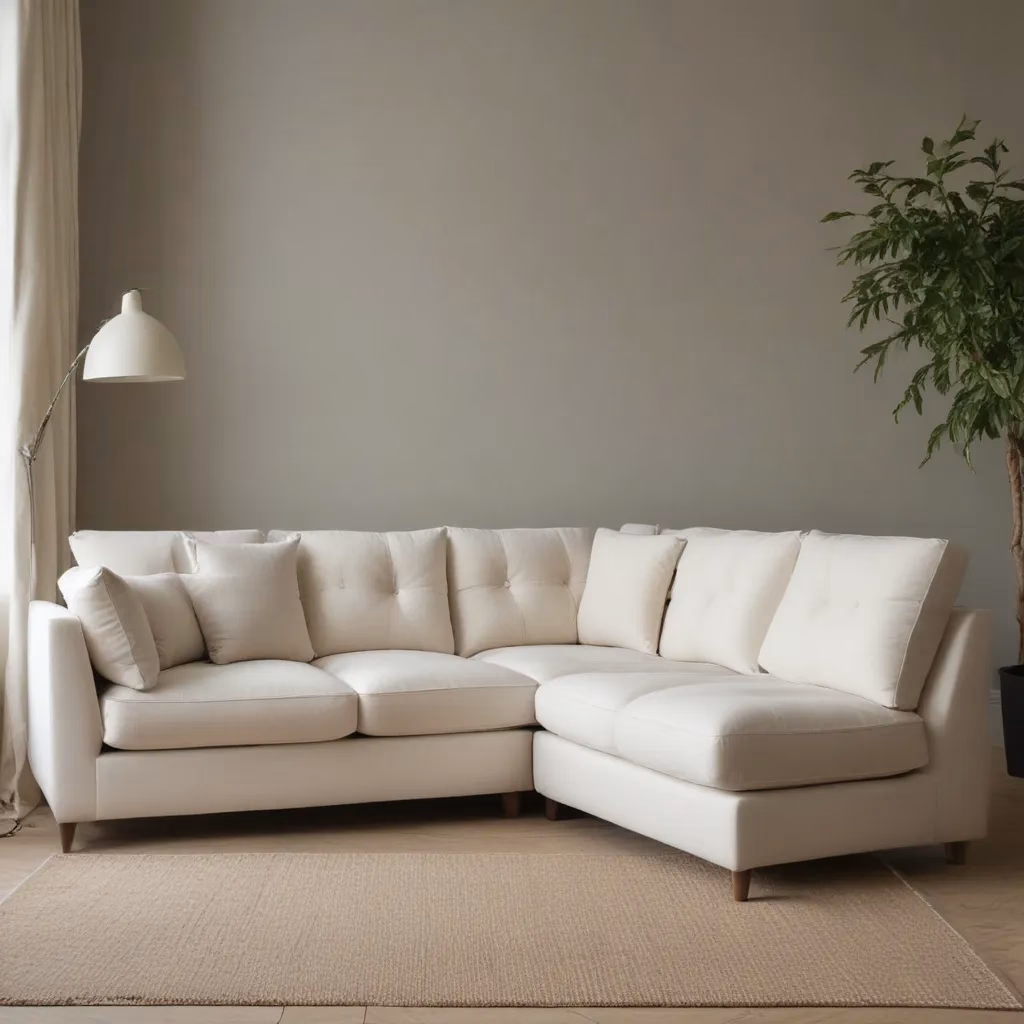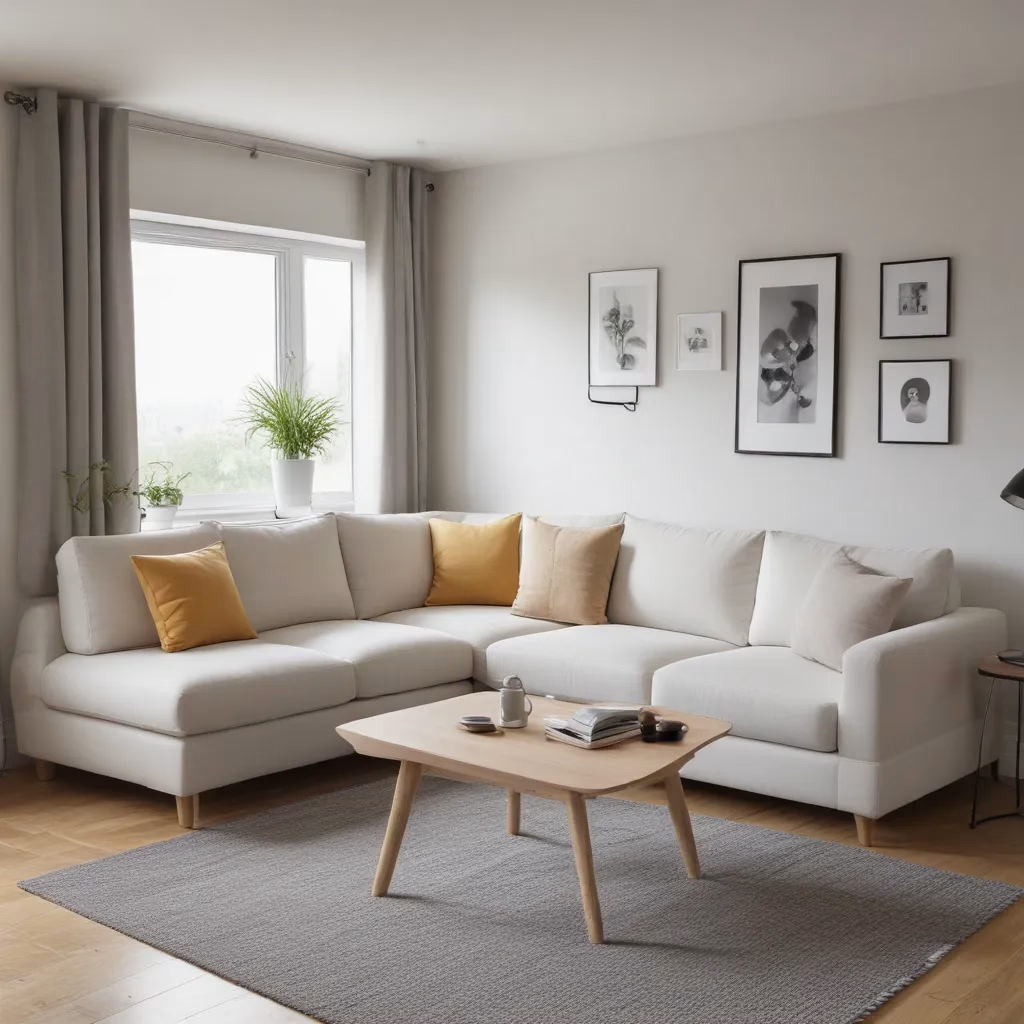
The Rise of Corner Sofas in UK Homes
Corner sofas have become increasingly popular in UK homes, particularly in urban areas where living spaces are often compact. These versatile pieces of furniture offer a practical solution for maximising seating capacity without compromising on style or comfort. As of September 2024, the trend towards corner sofas continues to grow, with homeowners and interior designers alike recognising their potential to transform small living rooms.
Corner sofas, also known as L-shaped sofas, fit snugly into room corners, making use of space that might otherwise be wasted. This efficient use of floor area is particularly valuable in flats and smaller houses, where every square metre counts. By following the natural contours of a room, corner sofas create a sense of flow and can make a space feel larger than it actually is.
The appeal of corner sofas extends beyond their space-saving qualities. These pieces offer a range of seating options, from casual lounging to formal entertaining. Many models feature adjustable components, allowing users to reconfigure the sofa to suit different occasions. This adaptability is a key factor in their growing popularity, as UK households seek furniture that can meet various needs without requiring frequent replacements.
Selecting the Right Corner Sofa for Your Space
When choosing a corner sofa for a small space, several factors should be considered to ensure the best fit for both the room and the homeowner’s lifestyle.
Size and Configuration
The first step in selecting a corner sofa is to measure the available space carefully. It’s crucial to account not only for the dimensions of the sofa itself but also for the area needed to move comfortably around it. UK furniture retailers often offer a range of sizes, from compact two-seater corner units to larger configurations that can seat five or more people.
Consider the following measurements:
| Measurement | Why It’s Important |
|---|---|
| Room width and length | Determines the maximum size of sofa that will fit |
| Corner angles | Ensures the sofa will fit snugly without protruding |
| Doorways and hallways | Confirms the sofa can be delivered and installed |
| Ceiling height | Impacts the visual proportion of the sofa in the room |
It’s also worth considering whether a left-hand or right-hand corner configuration will work best in your space. This refers to which side the longer part of the L-shape extends when facing the sofa. Some models offer reversible cushions or modular designs, allowing for flexibility in arrangement.
Material Choices
The choice of upholstery material can significantly affect both the look and practicality of a corner sofa. In the UK market, several options are popular:
-
Fabric: Offers a wide range of colours and textures. It’s often more affordable and can be more comfortable in varying temperatures. However, it may require more frequent cleaning, especially in households with children or pets.
-
Leather: Provides a luxurious look and is easy to clean. It’s durable and can improve with age, developing a patina. Leather can be cool to sit on in winter and may require conditioning to maintain its appearance.
-
Faux leather: A more budget-friendly alternative to genuine leather, offering similar easy-clean properties. It may not be as durable as real leather but can be a practical choice for busy households.
-
Velvet: Currently trending in UK interiors, velvet offers a plush, luxurious feel. It’s available in rich, deep colours that can add warmth to a room. However, it can be more challenging to maintain and may show wear more quickly than other fabrics.
When selecting a material, consider factors such as durability, ease of cleaning, and how well it complements your existing décor. It’s also worth thinking about the long-term maintenance required for each type of upholstery.
Comfort and Support
The comfort of a corner sofa is paramount, especially if it’s to be used frequently. Look for models with high-density foam cushions that offer good support without losing their shape over time. Some UK manufacturers now incorporate memory foam or pocket springs into their designs for enhanced comfort.
Consider the depth of the seat cushions and the height of the backrest. A deeper seat may be more comfortable for taller individuals, while a higher backrest can provide better support for the upper body. Many corner sofas now come with adjustable headrests or lumbar support, allowing users to customise their seating position.
Integrating Corner Sofas into Small Living Rooms
Once you’ve selected the perfect corner sofa, the next step is to integrate it effectively into your small living space. This involves careful planning and consideration of the overall room layout.
Optimal Placement
The most common placement for a corner sofa is, unsurprisingly, in a corner of the room. This position maximises the use of space and creates a natural focal point. However, there are other creative ways to position a corner sofa in a small room:
-
Floating arrangement: Place the sofa away from the walls to create a sense of space behind it. This can make the room feel larger and more open.
-
Room divider: Use the sofa to separate different areas in an open-plan space, such as defining a living area within a larger room.
-
Window positioning: If you have a bay window, consider placing the corner sofa within it to create a cosy seating nook.
When positioning your sofa, ensure there’s enough space to move around it comfortably. A general rule of thumb is to leave at least 45-60 cm of walking space around the furniture.
Complementary Furniture
To make the most of a small space with a corner sofa, choose complementary furniture that enhances functionality without overcrowding the room. Here are some ideas:
- Nesting tables: These can be tucked away when not in use, providing extra surface area only when needed.
- Ottoman with storage: Doubles as both seating and storage, perfect for hiding away blankets or magazines.
- Wall-mounted shelving: Utilises vertical space for storage and display without taking up floor area.
- Slim console table: Can be placed behind the sofa to create a landing zone for keys and mail.
Colour and Texture
The colour and texture of your corner sofa can have a significant impact on the perception of space in a small room. Light colours tend to make a space feel larger and more open, while darker hues can create a cosy, intimate atmosphere.
Consider these colour strategies:
- Monochromatic scheme: Choose a sofa in a similar shade to your walls to create a seamless look that expands the space visually.
- Contrast: A bold-coloured sofa against a neutral background can serve as a striking focal point.
- Textured fabrics: Add depth and interest to the room without overwhelming the space.
Maximising Functionality in Small Spaces
Corner sofas offer more than just seating; they can be a hub of functionality in a small living room. Many models available in the UK market come with built-in features designed to enhance their utility.
Storage Solutions
One of the most valuable features in a small space is hidden storage. Many corner sofas incorporate storage compartments within their design, offering practical solutions for keeping living areas tidy. Look for models with:
- Lift-up seats: These reveal storage areas perfect for blankets, pillows, or seasonal items.
- Drawers: Some designs include drawers in the base, ideal for smaller items like remote controls or magazines.
- End tables with storage: Integrated end tables may include cupboards or shelves for additional storage.
When considering storage options, think about what items you need to store and how frequently you’ll need to access them. This will help you choose a sofa with the most practical storage configuration for your needs.
Convertible Features
For homes where space is at a premium, furniture that serves multiple purposes is invaluable. Many corner sofas now come with convertible features that expand their functionality:
-
Sofa beds: These transform from a comfortable seating area during the day to a guest bed at night. Look for models with easy-to-use mechanisms and supportive mattresses.
-
Reclining sections: Some corner sofas include reclining seats, allowing for personalised comfort without the need for separate armchairs.
-
Adjustable backrests: These allow you to change the depth of the seating area, accommodating different postures and activities.
-
Movable chaise: A movable chaise section lets you reconfigure the sofa to suit different room layouts or occasions.
When selecting a convertible corner sofa, consider how often you’ll use these features and ensure the mechanisms are sturdy and easy to operate.
Maintaining Your Corner Sofa
To ensure your corner sofa remains a centrepiece of your small living space for years to come, proper maintenance is essential. The specific care required will depend on the material of your sofa, but some general tips apply:
-
Regular cleaning: Vacuum the sofa weekly to remove dust and debris. Use the appropriate attachments to clean crevices and under cushions.
-
Immediate stain treatment: Address spills and stains promptly to prevent them from setting. Use cleaning products suitable for your sofa’s material.
-
Rotation: If possible, rotate cushions regularly to ensure even wear and maintain the sofa’s shape.
-
Professional cleaning: Consider having your sofa professionally cleaned once a year, especially for fabric upholstery.
-
Sunlight protection: Position your sofa away from direct sunlight or use window treatments to prevent fading and material degradation.
For leather sofas, regular conditioning is important to maintain the material’s suppleness and prevent cracking. Fabric sofas may benefit from the application of a stain-resistant treatment to prolong their lifespan.
The Future of Corner Sofas in Small UK Homes
As urban living continues to evolve, so too does the design of corner sofas. Looking ahead, we can expect to see further innovations in this furniture category, with a focus on:
- Smart integration: Corner sofas with built-in charging ports, speakers, or even lighting systems.
- Eco-friendly materials: An increase in sustainable fabrics and recycled materials used in construction.
- Modular designs: More flexible configurations that can be easily adapted to changing space needs.
- Space-saving technology: Advanced mechanisms that allow for easier transformation between sofa and bed modes.
These advancements will continue to make corner sofas an attractive option for those looking to maximise space in small UK homes.
Conclusion
Corner sofas offer a practical and stylish solution for maximising seating in small living spaces. By carefully considering size, material, and functionality, homeowners can select a corner sofa that not only fits their space but enhances it. With proper integration into the room’s design and regular maintenance, a corner sofa can serve as a versatile centrepiece in any compact living area.
For those looking to explore a wide range of corner sofas suitable for small spaces, Sofa Spectacular offers an extensive collection of designs to suit various tastes and room sizes. Whether you’re furnishing a cosy flat or a compact family home, the right corner sofa can transform your living space, providing comfort, style, and functionality in equal measure.



